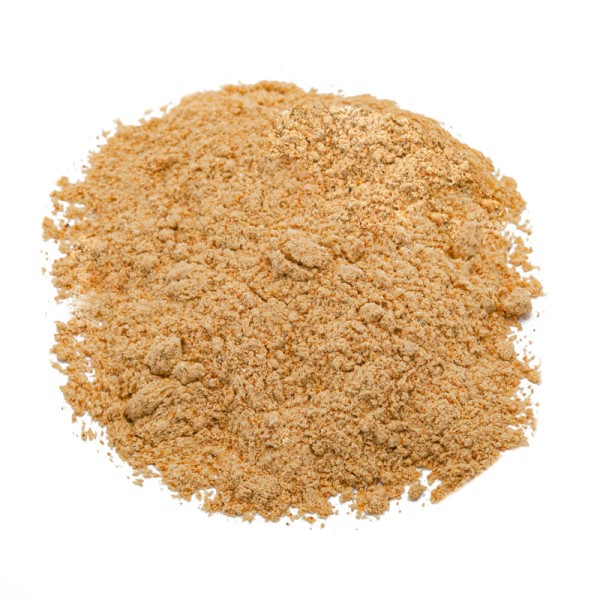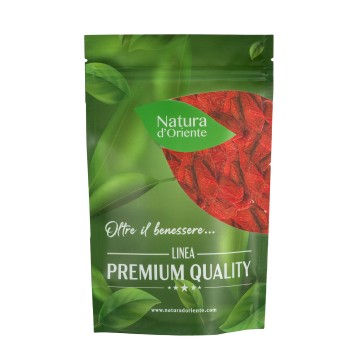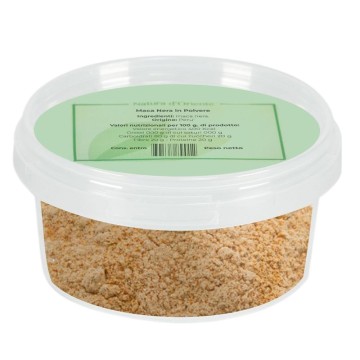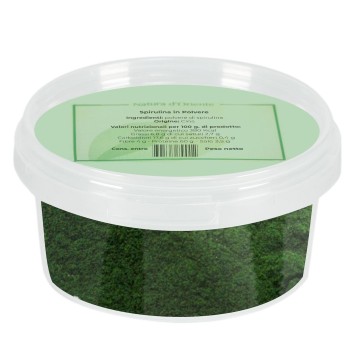The Peruvian red maca is used in herbal medicine for its nutritional, tonic, revitalizing qualities against stress and fatigue. It is highly valued for its amino acid content, which is useful for increasing muscle strength and endurance. It is a root also known as Peruvian viagra, to support sexual performance naturally. It is proposed as an excellent nutrient for metabolic support. The recommended dosage is 5 grams 1/2 times a day. The root of this Peruvian plant is known as a natural remedy in herbal medicine, due to its tonic-adaptogen action. It increases the body's ability to resist stress and provides the energy needed to support physical and mental fatigue. Maca has been known for centuries in the Andes as an excellent food at high altitudes, to restore energy and improve vitality. Red maca also maintains its properties in the powdered version, from cultivation, giving an earthy, intense, but more delicate taste than yellow and black maca.
Red maca: properties and benefits
This type of maca, compared to the yellow or black one, is the one that contains the highest level of amino acids. It is known for its tonic properties, able to increase energy and reinvigorate the body, counteracting stress and fatigue. It represents a source of valuable nutrients from this point of view, for metabolic support and energy levels. Red maca is rich not only in amino acids but in protein, iron, B vitamins and other nutrients. In addition, it is an optimal variety from an antioxidant point of view. It has adaptogenic properties, able to help the body counteract states of stress and fatigue. It enhances the vital adaptation mechanisms of our body. It favors an energy and hormonal balance, and is considered a metabolic support food. It supplies nutrients and other substances necessary for the body's metabolism, i.e. it facilitates the correct vital chemical processes that take place inside the body. Acting as a tonic, red maca counteracts physical and mental tiredness, and for this reason it is a root known for its invigorating action. It is useful for toning the body for athletic purposes or for improving male sexual performance, as it is known as or "Peruvian ginseng". Facilitates athletic performance as a natural energizing supplement, acting in a tonic sense on resistance and as an antioxidant - in the long term it acts against oxidative stress. To increase muscle strength and endurance, red maca is the ideal choice. Powdered red maca helps overcome moments of both physical and mental tiredness, and represents a natural resource for concentration, memory and attention. It is historically used as a natural support in case of erectile difficulty and low sexual desire, having an invigorating function. Acts as a vasodilator (widening of blood vessels), which increases blood flow through the action of certain compounds. For women, red maca can promote well-being during the premenstrual and menopausal phase, supporting mood, energy levels and stamina. Some studies have been carried out on Peruvian maca, on the ability to balance hormones on pre- and post-menopausal women. This version of red maca powder, grown at high altitudes, comes from farming; ensures a natural food, free from toxic or harmful substances.
Origins and History of cultivation
Maca is a rare Peruvian root native to South America, which grows in the Andes, the high mountains of Peru and Bolivia. It occurs naturally in three colors (yellow, red and black), all of which come from the same plant, albeit with slightly different nutrient profiles. It was known in all three variants since ancient times by the Andean populations, but we know that 60-70% of these plants are yellow. Red maca was valued for its less intense flavour. Its tap root, the best edible part, was harvested in the wild, which was dried or cooked fresh: cooked in the oven, fermented as a drink. Its Spanish and Quechua names include maca-maca, maino, ayak chichira, and ayak willku. In popular medicine, maca was used by South American populations to treat fatigue and anemia, as an aphrodisiac to treat erectile dysfunction and to increase fertility. Traditionally it was used as a natural remedy in case of hypertension, to soothe rheumatism and respiratory disorders. It was already discovered by the Spaniards at the end of the sixteenth century, and in recent times they began to cultivate it through a domestic species to obtainits root is wider. This part is reduced to red maca powder to be exported all over the world. Maca can also be processed to obtain its extract or dried and transformed into flour. Powdered maca represents the purest and most natural form, least processed; especially in this biological version – similar to the original state of the plant in ancient times.
Plant and root
Maca comes from Lepidium meyenii, a biennial herbaceous plant of the Brassicaceae family. Its growth and size are similar to turnips or radishes. Shows green and fragrant buds, thin leaves that sprout and do not exceed 20 cm in height. The leaves are continuously renewed and the flowers are self-fertile, creamy white in colour. The natural maca grown today often derives from a more recent domesticated species, Lepidium peruvianum. Its fleshy hypocotyl (a part of the seed) fuses with the tap root to form a rough pear-shaped body. The root can vary in size (circular, triangular, spherical, rectangular) and in color (creamy yellow, purplish-red, purple and black). Plants with red roots are not the most cultivated in Peru, but they are valued from a nutritional point of view.
Nutritional values of Red Maca
Maca root is a source of various nutrients: carbohydrates, fiber, vitamins, minerals and many amino acids compared to the yellow and black variants. It donates some compounds exclusive to maca such as macamides, macaridin, alkaloids and glucosinolates, to which the effects of the plant have been attributed. The root also provides trace elements, plant sterols and the amino acid L-arginine - useful as a vasodilator agent.
How to take red Maca powder
Maca can be used as a supplement, with a recommended daily dose of 5 grams, or once as a tonic. It has a slightly pungent taste, and for this reason it is often mixed with other drinks to enhance its nourishing and energizing qualities. You can add red maca powder to yogurt, smoothies, centrifuges, milk, tea, coffee, chocolate. Or, you can get it by dissolving the powder in a plain glass of water. Its earthy flavor is not always appreciated in the kitchen, but it can be added to some recipes such as biscuit dough, desserts, batters. You can also mix maca as a spice in cereal or oatmeal in the morning, in soups or stews, on vegetables or potatoes. It is also possible to use maca powder as an ingredient in the preparation of energy bars.
Red maca powder: side effects and contraindications
When taking maca it is important not to exceed the doses, and in the case of prolonged intake it is essential to follow the administration instructions of a doctor or naturopath. It is advisable to evaluate the dosage according to the objectives and to each specific health condition. Excessive consumption of red maca can cause tachycardia, diarrhea, agitation, insomnia, stomach upset, nausea, acne. The consumption of maca is not recommended during pregnancy and breastfeeding, for those suffering from thyroid disorders, or alterations in hormone levels.











 No reward points for this product.
No reward points for this product.







